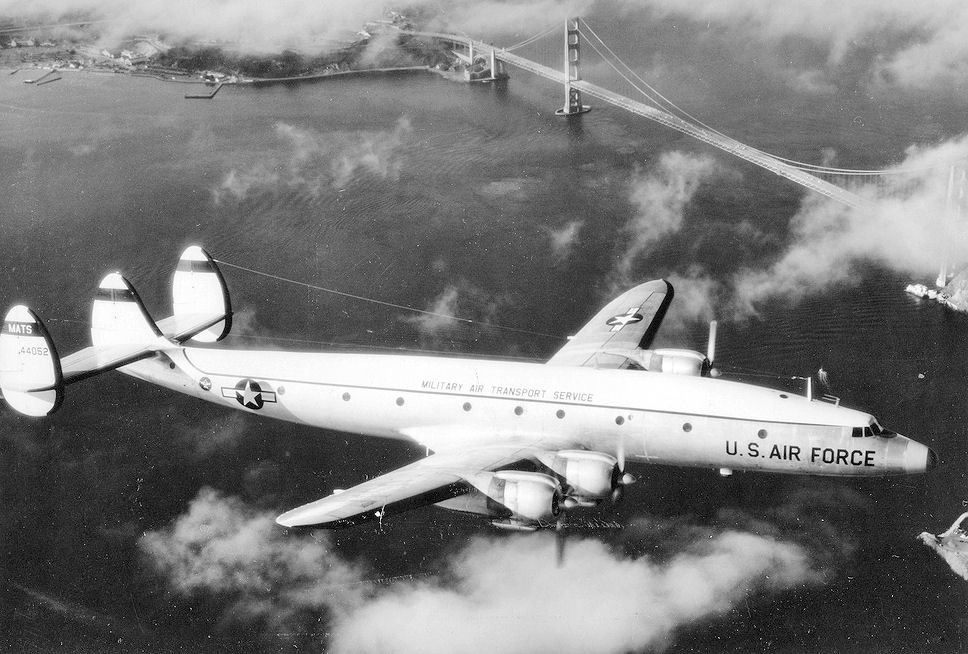
A C-121G flies over the Golden Gate Bridge. U.S. Air Force Photo, courtesy of Wikipedia.
The Demise of a US Air Force C-121G ‘Super Constellation’ — and the Arizona Trail That Honors It
Just before 2 p.m. on Saturday, Feb. 28, 1959, in the clear sky 5 miles north of Prescott, Arizona, something went wrong aboard an Air Force C-121G Super Constellation aircraft. The pilots, Navy Lt. j.g. Theodore Rivenburg and Cmdr. Lukas Dachs, had mere seconds to react as their large transport plane stalled 1,500 feet above the rough granite and cactus-covered ground below.
Rivenburg and Dachs throttled up their four-radial piston engines and tried to raise the nose as the silver plane made a right turn 2 miles south of the Prescott Municipal Airport. As the turn tightened, the bank steepened and the Super Connie snap rolled into a near-vertical dive.
The pilots had no time to recover.

Witnesses driving on state Route 89 told an Arizona Republic reporter that the plane “exploded ‘like an atom bomb’ as it slammed into the ground alongside the highway.”
In addition to Rivenburg and Dachs, the crash killed everyone else on board, including Lt j.g. Edward Francis Souza, Petty Officer 2nd Class James Miller, and Petty Officer 2nd Class Calvin Coon.
Sixty-one years later, the reasons behind the accident remain a mystery. The Air Force investigated, but the plane wasn’t equipped with a flight data recorder, so investigators had limited information about those terrifying final moments. The Air Force’s redacted crash report, released via a Freedom of Information Act request, notes good weather and no mechanical issues, and describes the crash’s cause as “undetermined.”
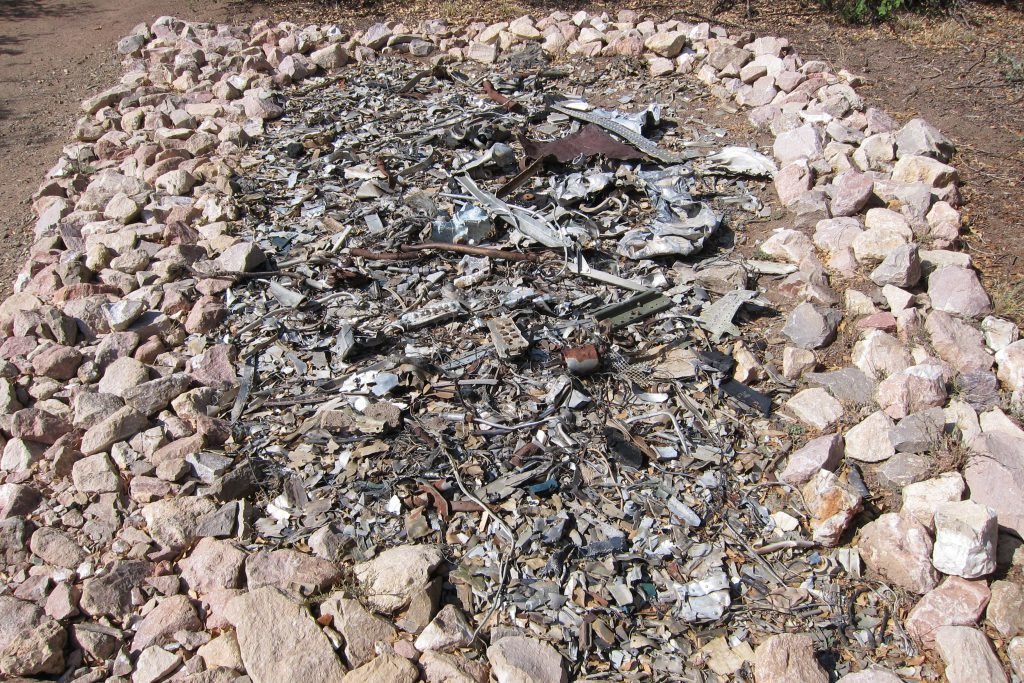
Over the years, scrub brush and manzanita grew over the blackened scars of the accident site. Monsoon thunderstorms and winter winds veiled the scraps of aluminum and wiring beneath sand and gravel. The bright Arizona sun turned the relics a pale gray. With each year, fewer and fewer of those who remember the crash remain. The tragedy might have faded completely if the city of Prescott hadn’t purchased 80 acres that included the crash site in 2009 to create a recreation area on the land.
By chance, the Prescott trail manager and some concerned citizens recovered the lost saga, and the city of Prescott dedicated the Constellation Trails to the memory of the crew in a powerful combination of history and outdoor recreation.
The vision for Lockheed’s Constellation aircraft began in a 1939 meeting between Howard Hughes and corporate brass. Hughes wanted a fleet of commercial aircraft for moving passengers and cargo across the country, and Lockheed wanted his business. The result was a first-of-its-kind commercial plane that, according to Lockheed, featured the industry’s first hydraulic power controls, cruising speeds faster “than most World War II fighters at 350 mph,” and a pressurized cabin for 44 passengers that allowed the plane to fly above most bad weather, creating a smooth and comfortable ride.

By 1942, the military saw the Constellation as a potential transport, and in 1944 Hughes broke cross-country speed records in the olive-green military version called the C-69. After World War II, TWA bought the military’s C-69s and converted them into commercial aircraft. In 1951, Lockheed introduced the Super Constellation, which featured “air conditioning, reclining seats and extra lavatories,” as well as unheard-of fuel efficiency.
From the 1950s through the 1970s, Super Constellations crisscrossed the globe as commercial and military workhorses. They saw action in Korea and Vietnam. In addition to hauling troops and cargo, Super Connies ran rescue missions, mapped Earth’s magnetic field, acted as the earliest airborne early warning platforms, hauled scientists to Antarctica, served as the Navy Blue Angels’ support plane, and even became the first Air Force One under President Dwight D. Eisenhower.
The crew of the ill-fated Super Connie, tail number 54-4069, was assigned to Navy logistics support squadron VR-7 at Moffett Field, California. The unit — part of the joint Military Air Transport Service, or MATS — moved people, patients, cargo, and mail throughout the Pacific. As part of the MATS, precursor to Military Airlift Command, the Navy operated and maintained the aircraft that belonged to the Air Force. According to a 1959 Naval Aviation News magazine feature on the unit, VR-7 helped maintain a supply line from California to Asia and the Middle East.
The last log entry came at 1:44 p.m. […] Minutes later, while flying north, AF 4069 made that right turn into oblivion 2 miles south of the Prescott airport.
The southern route passed “through Hawaii, Kwajalein, Guam, and the Philippines. From Manila, the Embassy route continues on to Saigon, Bangkok, Calcutta, New Delhi, Karachi, ending in Dhahran.” And the northern route ran from “California west to Hawaii, Wake Island, thence to Tokyo, returning by way of Midway Island to Hickam.”
The magazine said that the aircraft could carry 76 passengers or 67 litter patients or a payload of more than 10 tons. And in terms of size, “the big Connie exceeds two railroad boxcars in length. If upended, its wings would easily tower higher than a 10-story building.”
The crew was on a nine-day temporary duty trip for training to orient themselves around Naval Air Station Litchfield Park, now Phoenix Goodyear Airport. The Prescott airport’s tower logs show AF 4069 practiced approaches and touch-and-go landings at the airport the day before the crash. Around 8:45 a.m. the following morning, the plane arrived in the area for more practice. At 11:32 a.m., AF 4069 left the area, returned to NAS Litchfield Park, switched aircrews, and took off again at 12:45 p.m.

After departure, the crew most likely conducted high-altitude training, “basic air work and emergencies” until 1:30 p.m. The last log entry came at 1:44 p.m. when the crew reported a forest fire 20 miles south of Prescott. Minutes later, while flying north, AF 4069 made that right turn into oblivion 2 miles south of the Prescott airport.
“The nose came up and a roar of power was heard,” the Air Force crash report states. “The right wing dropped sharply as the plane entered a near vertical dive to the ground, with the right wing leading at time of impact.”
The report continues, “Witness states the gear and flaps were up,” and the next two lines are blacked out.
The “Findings” section says, “The primary cause of this accident is undetermined,” and “investigation of the wreckage revealed no material or mechanical failure.” The last line before a redacted paragraph of recommendations says, “the aircraft apparently stalled too close to the ground to effect recovery.”
The reason for the stall is unknowable.
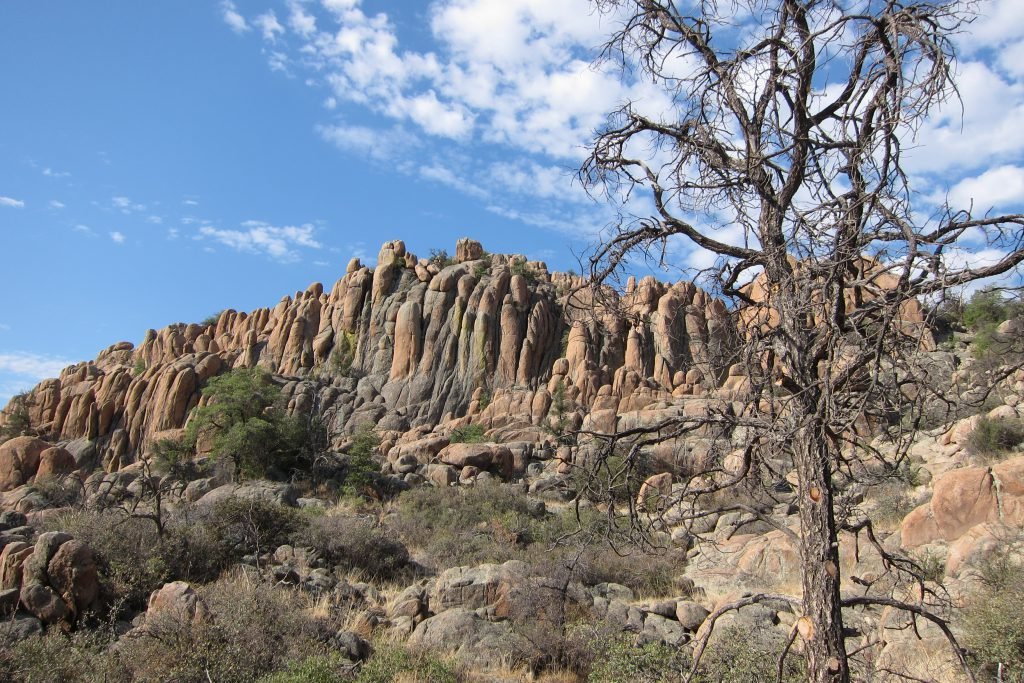
The FOIA response came with scanned copies of 23 black-and-white photos of the crash scene. It’s tough to make out much in many of them. The images show big splotches of black and gray with hand-drawn dashed lines and explanations. One photo stands out: Two men stand on the highway looking into a hole, hands tucked in their pockets and fedoras tilted on their heads. In the top middle of the frame, a bucket from a ’50s-era backhoe hangs ready to dig. The text on the photo says: “Location of #4 prop dome 6’2” depth under highway.”
Chris Hosking, Prescott Trails and Natural Parklands coordinator, had no knowledge of the accident when he began planning the area’s trails. While performing an archeological survey to check for Native American ruins and other historic artifacts, he noticed “all these aluminum shards everywhere.”
So he reached out to Cindy Barks, a reporter at the local paper, the Prescott Daily Courier, who helped him figure out that an airplane had crashed there decades before. He knew then that the community should do something special to honor the fallen aviators.
The city chose to name the trail system after the fallen Constellation. One of Hosking’s son’s friends, Cody Walker, read about the project and stepped up to lead an effort to build a monument and host a dedication ceremony as part of an Eagle Scout project.
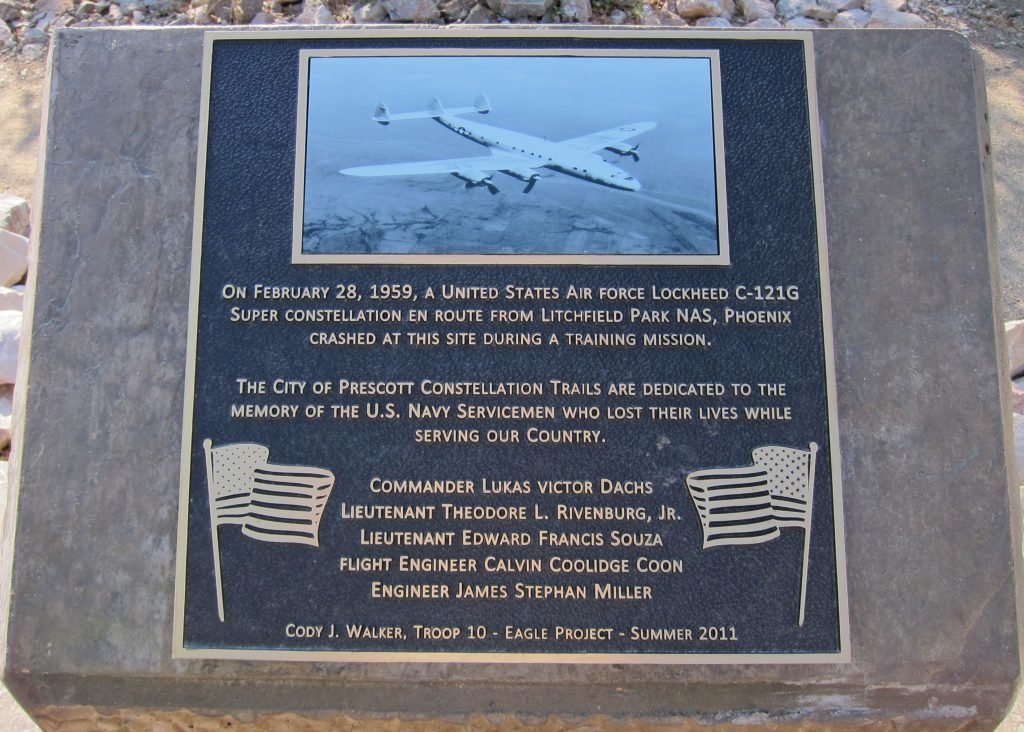
“He went the extra mile,” Hosking says. “He contacted some of the families of the five airmen who were lost in that crash.”
Several of the aircrew’s children, other family members, and unit alumni came to Prescott for the ceremony.
“It was really emotional, you know, because some of these kids were too young to know their dads,” he says. “They knew their dads died in Arizona, but they didn’t know where or why or what happened, so that was a cool way to put some closure on that whole event for them.”
The Constellation Trails weave through sublime rock formations called the Granite Dells. The red granite boulders look like the backdrop of an old Western movie and have served as the set for many early Westerns and other films since 1912.
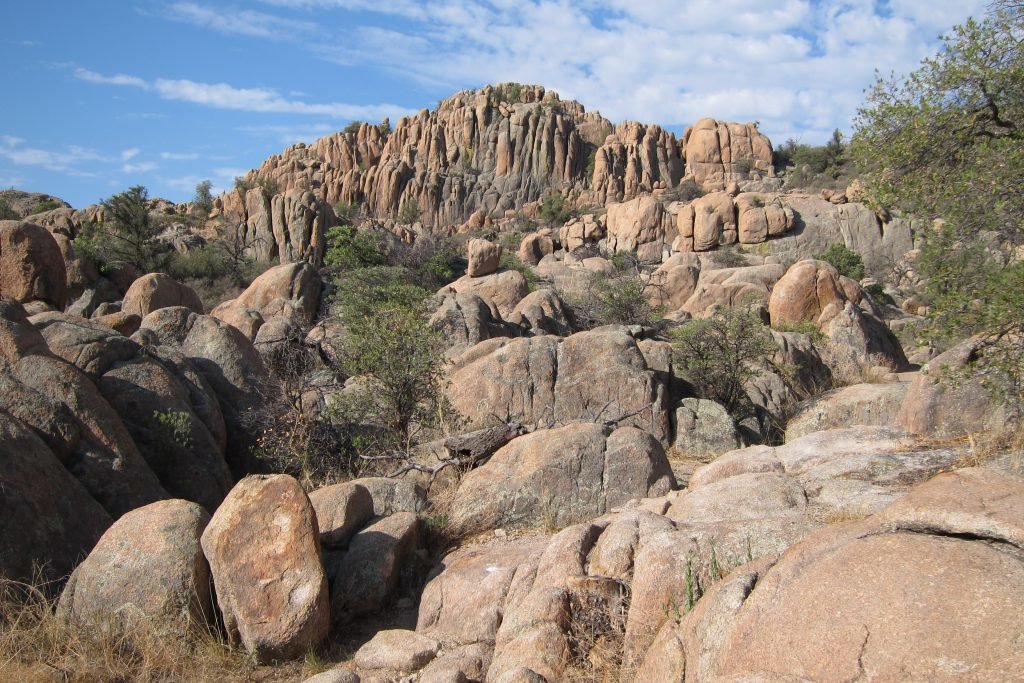
Hosking designed a trail system with an outer loop and multiple cut-throughs to the center. Near the trailhead, scrub oak passageways filter the sunlight, and as the trail gains elevation, the rock formations become more and more impressive.
With names like North 40, Ham and Cheese, Hully Gully, Hole in the Wall, Lost Wall, Ridgeback, and Ranch Road Shortcut, the routes in the Constellation Trail system sound like amusement park rides.
“I usually come up with the names,” says Hosking, an avid mountain biker. “Usually it’s a landmark or a view or something that happened there.”
Carving the trails among granite boulders and navigating rock walls and cacti is hard work. While the community funds the projects, there’s no dedicated workforce to actually build the trails, so Hosking depends on a local volunteer group composed primarily of local retirees called the “Over the Hill Gang.”

courtesy of Chris Hosking.
“We get about 10,000 hours of volunteer time out of those guys,” says Hosking of the group, which started with four volunteers and now has 60 or 70 active members. “I come up with a crazy plan and design, and then those guys come out and we build trail.”
They built the trails in the Dells with hand tools because they couldn’t get heavy machinery past the boulders. Doing so takes significantly more time and effort.
John Bauer, a retired Air Force navigator, has volunteered with the Over the Hill Gang for more than 10 years, and the Constellation Trails were the first he helped build.
“I loved building those trails,” says the former F-4 weapons systems officer, who also served as a navigator on C-130s and C-141s.
These days, Bauer loves to move boulders, and with the rocky topography of the Dells, he was in luck.
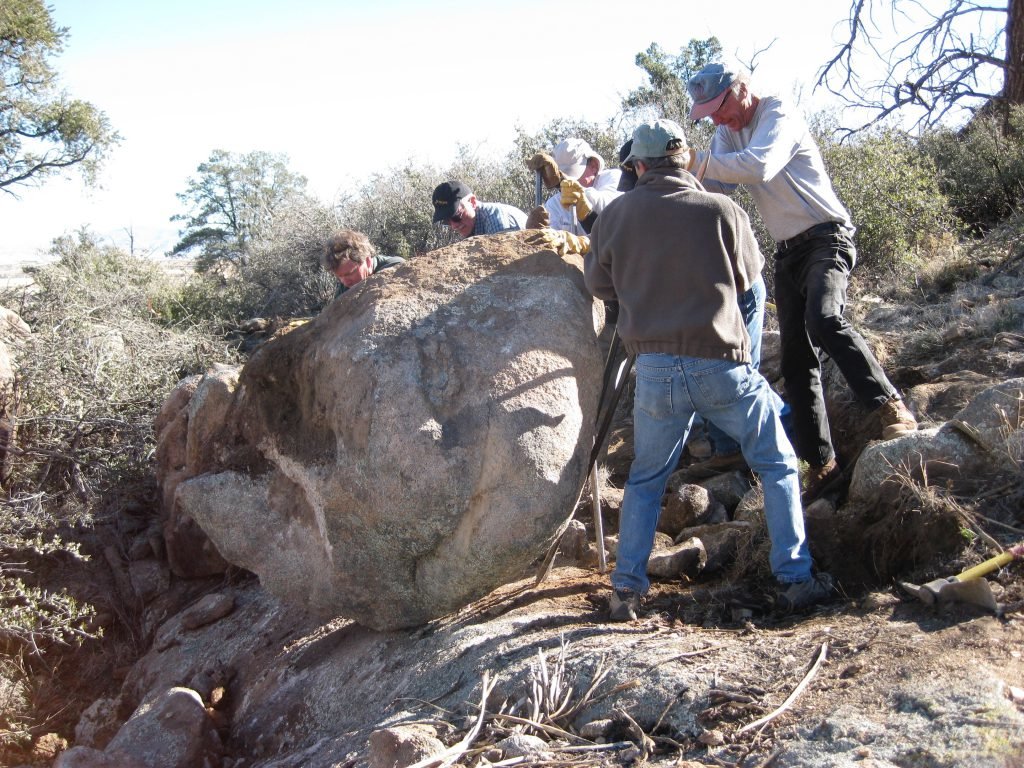
Hosking is on the left and John Bauer is second from left. Photo courtesy of Chris Hosking.
“Some of the trails in other areas are not as interesting — scraping the weeds off a piece of dirt,” the retired lieutenant colonel says. “I’ve done a lot of that, but it doesn’t give me the same amount of joy as moving rocks.”
The trailhead sits at the north end of the park, and the trails gain elevation as they work their way south. According to Bauer, the high ground near the back of the trail system proved the most challenging to build.
“There was a short little connection that went through a very narrow and steep canyon,” he says. “That was probably one of the most difficult parts because working in those little canyons, it’s hard to move the boulders around.”
With rock bars, leverage, sweat, muscle, and grit, the crew cleared an awe-inspiring trail.

Photo courtesy of Chris Hosking.
“The bigger the boulder, the more people we need to move them,” Bauer says. “We’ve moved some pretty gigantic boulders.”
Small pieces of the aircraft still lie scattered throughout the area. The crew gathered the pieces they found and placed them next to the memorial near the trailhead.
“If you went out and off the trails, off into the shrubs and stuff there, you could still find pieces of that airplane even after all these years,” Bauer says.
The Constellation Trails are just a few miles of trail in an area that features 104 miles of city-owned trails, as well as hundreds of additional miles of trail on nearby Forest Service and Bureau of Land Management land. Easy access and the variety and number of trails has made this stretch of northern Arizona a hiking and mountain biking destination.
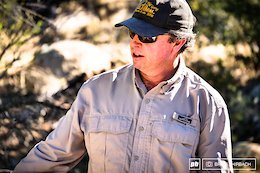
To understand the Constellation Trails, and the larger Prescott Trail System, it’s important to understand a bit about their creator.
Hosking, originally from the United Kingdom, trained as an industrial designer and spent time in the Silicon Valley working for Apple. One day the lifelong outdoorsman realized, “I didn’t really like that living — that particular lifestyle — so I kind of went freelance and moved up to Mammoth Lakes up in the Sierras.”
While in the Sierras, he delved into trail design. Eventually, Hosking and his wife wanted a bigger town to raise their kids in, and after some research, Prescott ended up No. 1 on both their lists. They arrived in Prescott in 2006, and soon after he became Prescott’s trail master.
In 14 years, he’s taken Prescott from 24 miles of trails to more than 100.
“I would put Prescott up against any community in the country as far as the quality of trails, the variety of trails, the access,” he says. “I wouldn’t put it in the same category as Moab. Moab’s like Disneyland — you go there and it’s got every type of trail. We’re not that, we’re a real town with a great trail system.”
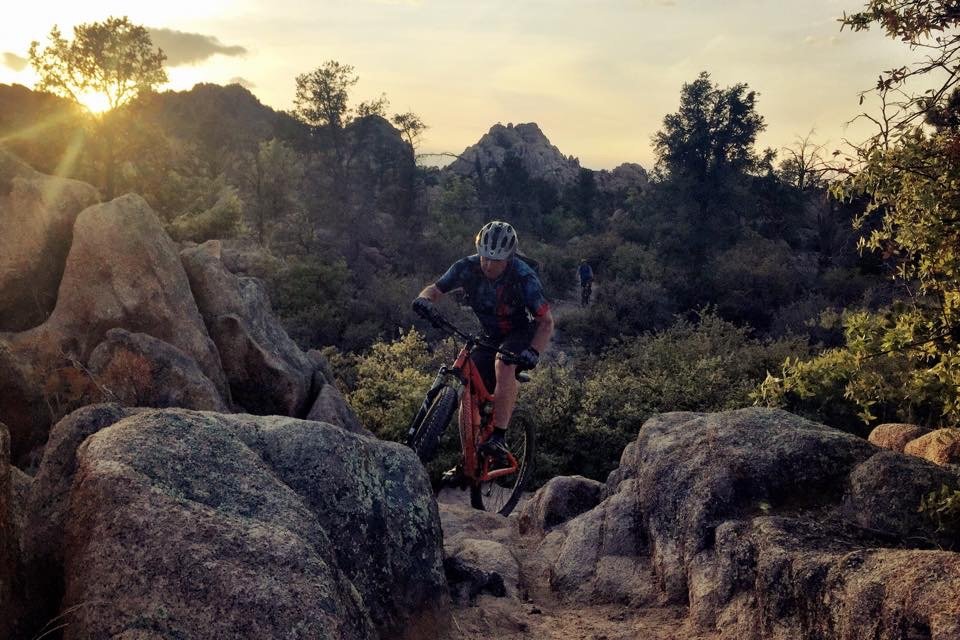
courtesy of Chris Hosking.
Hosking attributes the success to the area’s excellent topography, a variety of vegetation, and a volunteer work crew “who don’t mind busting their ass to get things done.”
“I see Prescott as kind of the whole package because it’s a great place for people who live here, and it’s got a huge variety of very easy trails, and then it’s got very technical trails, and everything in between,” he says.
Gil Stritar, a Prescott Valley resident who hikes nearly every day, says the Constellation Trails are his favorite in the area because of the ease of access and excellent views.
“There’s beautiful photo ops in the narrows sections,” he says. “Most trails in the Granite Dells have big drop-offs and are more remote, so this is a good family choice. Also, this is the most scenic trail in the Dells in my opinion.”
According to Hosking, all the years of hard work, purchasing land, working agreements, and designing and building trails have come into focus this year as the COVID-19 pandemic has spiked visits to trails sometimes by 200 percent to 300 percent. The Constellation Trails have seen 100 percent more traffic.
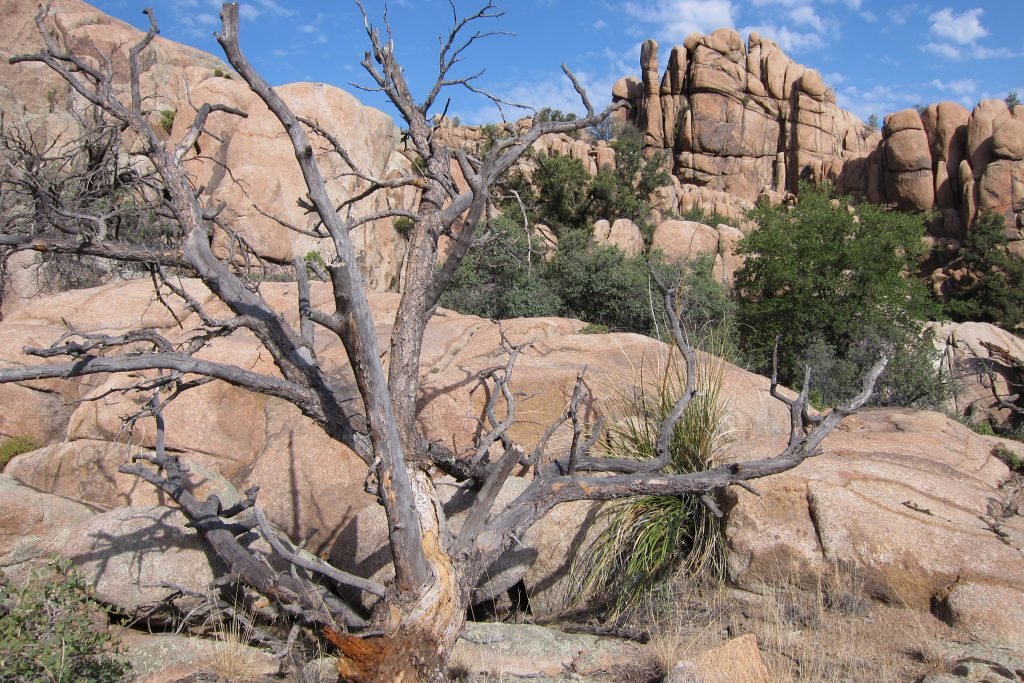
“When you have gyms closed and everything is closed, the only way people can really get out and exercise is by going on trails,” Hosking says. “It’s helped us realize what we’ve done and what a benefit it’s been to the community because now people can get out and go hike and get away from things, so we have a lot of stuff to be thankful for.”
Prescott has a large hiking and mountain biking community that’s growing thanks to the National Interscholastic Cycling Association.
“We’ve got seven teams in the area,” says Hosking, including the top two teams in Arizona. “All those kids getting into mountain biking means their parents are getting into mountain biking.”
While some ride their mountain bikes on the Constellation Trails, Hosking says there are usually more hikers due to the rocky terrain and challenging aspects of the trails.
He likes to ride there when he feels like beating himself up and says his favorite trail is “the one I’m on!”

Brandon Lingle is an associate contributing editor for Coffee or Die Magazine. As a journalist and writer, his work has appeared in The American Scholar, The New York Times (At War), Guernica, Narrative, and more. He served as a U.S. Air Force public affairs officer and Air Force Academy English professor. Brandon is a veteran of the Iraq and Afghanistan wars; he currently lives in Texas and edits War, Literature & the Arts.
BRCC and Bad Moon Print Press team up for an exclusive, limited-edition T-shirt design!
BRCC partners with Team Room Design for an exclusive T-shirt release!
Thirty Seconds Out has partnered with BRCC for an exclusive shirt design invoking the God of Winter.
Lucas O'Hara of Grizzly Forge has teamed up with BRCC for a badass, exclusive Shirt Club T-shirt design featuring his most popular knife and tiomahawk.
Coffee or Die sits down with one of the graphic designers behind Black Rifle Coffee's signature look and vibe.
Biden will award the Medal of Honor to a Vietnam War Army helicopter pilot who risked his life to save a reconnaissance team from almost certain death.
Ever wonder how much Jack Mandaville would f*ck sh*t up if he went back in time? The American Revolution didn't even see him coming.
A nearly 200-year-old West Point time capsule that at first appeared to yield little more than dust contains hidden treasure, the US Military Academy said.












